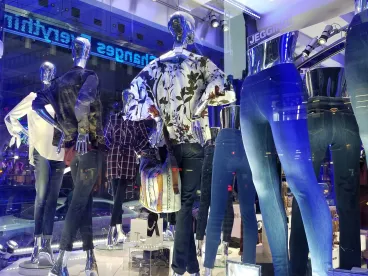On May 24, 2022, the New York Assembly and Senate passed a bill, S.6291, that would ban the sale of any apparel in the state of New York that contain intentionally added PFAS starting on December 31, 2023. The New York fashion PFAS legislation, which must be signed into law by the Governor before it becomes effective, would have significant impacts on hundreds of companies involved in the fashion supply chain, and a letter was submitted to Governor Hochul on September 1, 2022 asking the Governor to either veto the bill outright or provide the industry with more time to come into compliance with the law. Absent the bill being vetoed, companies involved in the fashion industry must take steps now to prepare not only for the New York bills impact on sales, manufacturing processes, and supply sourcing, but also also for the possibility of additional states taking similar steps as New York.
New York Fashion PFAS Legislation
S.6291 is a relatively simplistic bill that will prohibit the sale of any apparel in the state of New York with intentionally added PFAS. The bill defines apparel as “…clothing items intended for regular wear or formal occasions including, but not limited to, undergarments, shirts, pants, skirts, dresses, overalls, bodysuits, vests, dancewear, suits, saris, scarves, tops, leggings, leisurewear, formal wear, onesies, bibs, and diapers. ‘Apparel’ shall not include professional uniforms or outerwear intended for extreme conditions.” The ban on PFAS in apparel would go into effect on December 31, 2023.
On September 1, 2023, though, the American Apparel and Footwear Association (AAFA) sent a letter to Governor Hochul asking her to veto the bill or extend the compliance deadline, adopt a numeric threshold that would trigger a ban on pieces of apparel, and allow the industry to sell all existing apparel to avoid having to discard the products. The Governor has until the end of the year to sign or veto the bill, so it is likely that the AAFA will continue its appeals to the Governor in the days and weeks to come.
Impact of New York Fashion PFAS Law On Businesses
New York’s legislation places a consumer product used by every single citizen of the state in the crosshairs with respect to PFAS and, if signed into law, would require the apparel industry to pivot in the next fifteen months to source materials that do not contain any of the over 10,000 types of PFAS that exist, alter manufacturing processes to ensure compliance, and make potentially financially significant decisions with respect to current stocks of apparel and any apparel manufacturing during companies’ switch to “PFAS free” apparel. Other states have either proposed PFAS apparel legislation (California) or are considering doing so, but New York’s legislation is seen as particularly aggressive due to the relatively short timeframe for compliance and due to its extremely broad definition of PFAS (one flourinated atom).
It is of the utmost importance for businesses along the whole apparel supply chain to evaluate their PFAS risk. Public health and environmental groups urge legislators to regulate these compounds. One major point of contention among members of various industries is whether to regulate PFAS as a class or as individual compounds. While each PFAS compound has a unique chemical makeup and impacts the environment and the human body in different ways, some groups argue PFAS should be regulated together as a class because they interact with each other in the body, thereby resulting in a collective impact. Other groups argue that the individual compounds are too diverse and that regulating them as a class would be over restrictive for some chemicals and not restrictive enough for others.
Companies should remain informed so they do not get caught off guard. States are increasingly passing PFAS product bills that differ in scope. For any manufacturers, especially those who sell goods interstate, it is important to understand how those various standards will impact them, whether PFAS is regulated as individual compounds or as a class. Conducting regular self-audits for possible exposure to PFAS risk and potential regulatory violations can result in long term savings for companies and should be commonplace in their own risk assessment.




 />i
/>i
